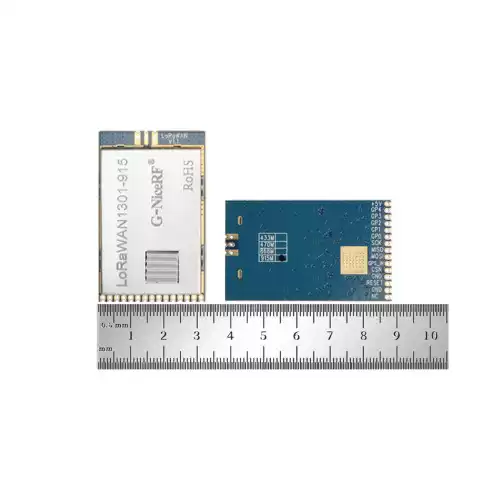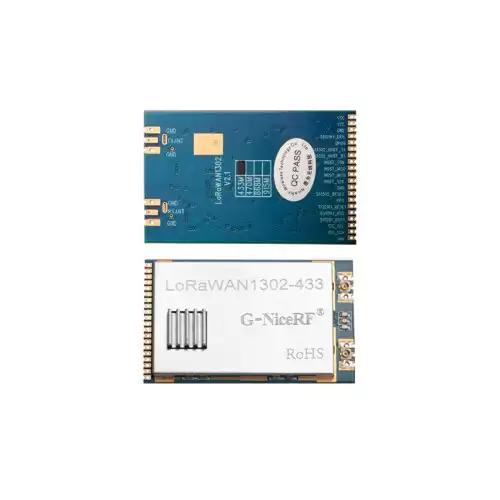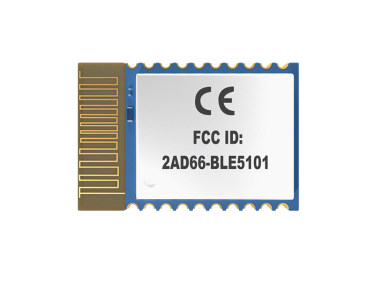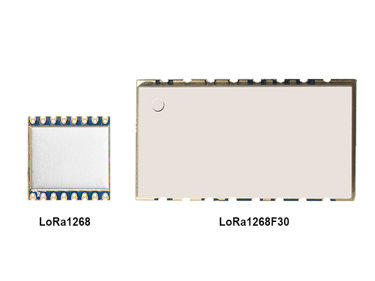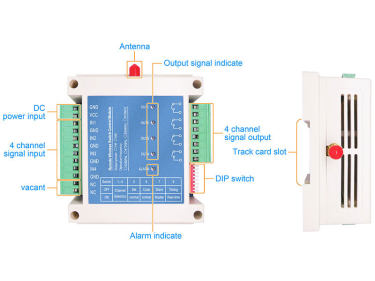Characteristics and Advantages of LoRa Gateway + LoRa Nodes
The LoRa gateway serves as a device connecting terminal equipment to the LoRaWAN network, responsible for collecting data from multiple LoRa base stations and transmitting it to the cloud. It gathers messages transmitted by LoRa nodes and forwards them to LoRaWAN servers, facilitating communication from devices to the cloud.
Gateways typically handle packet forwarding, encryption/decryption, and communication with LoRaWAN servers.
The heatsink on the LoRa gateway ensures stable operation within a safe temperature range, thereby prolonging device lifespan and enhancing performance and reliability.
LoRa gateway chip
LoRaWAN 1301 is a compact LoRaWAN gateway frontend module with SPI interface introduced by RAKwireless. This module utilizes the SX1301 chip, a standard design from Semtech, and features a built-in TCXO crystal oscillator. It is specifically designed for LoRaWAN gateways.
Characteristics of SX1301:
Multi-channel Processing Capability: Supports simultaneous processing of multiple LoRa signal channels, up to 8 independent channels.
High Integration: Integrates 8 low-noise amplifiers (LNAs), 8 bandwidth filters (BPFs), and 1 digital baseband processor (BBP) on a single chip, realizing multi-channel LoRa reception function.
Low Power Consumption: Designed with low power consumption, suitable for long-term operation in low-power scenarios.
High Sensitivity: Has excellent receiver sensitivity, enabling reliable communication in long-range and weak signal environments.
Development Support: Offers rich software and hardware support, facilitating development and deployment for LoRaWAN gateway devices.
Characteristics of SX1302:
Higher Integration: Compared to SX1301, it integrates more functional modules, including 12 channel processing units (CHPUs), 2 main clock units (MCUs), and 1 digital signal processing unit (DSPU).
Support for More Channels: Can support up to 16 independent LoRa signal channels, providing higher data throughput and network capacity.
Compatibility: Backward compatible with SX1301 interfaces and protocols, ensuring compatibility with existing LoRaWAN infrastructure.
Improved Interference Immunity: Has stronger interference immunity, providing more stable communication performance in complex wireless environments.
Programmability: Offers greater programmability, allowing developers to customize and optimize according to specific application requirements.
Integrated Temperature Sensor: The temperature sensor integrated into SX1302 plays an important role in ensuring stable chip operation and improving system reliability.
LoRa utilizes multiple spreading factors (SF) to modulate signals, allowing for orthogonal decoding of signals with different spreading factors on the same channel. The gateway connects to the network server using standard IP, and terminals communicate with one or more gateways via single-hop communication. All terminal communications are bidirectional, and the system also supports features such as over-the-air software upgrades.
Who would use LoRa gateways?
LoRa gateways are widely used due to their numerous advantages, and they find applications in various sectors such as enterprises, large factories, smart agriculture, remote meter reading, smart manhole covers, pipe galleries, office buildings, smart inspections, smart homes, smart streetlights, smart heating, and more.
Here are the scenarios suitable for using LoRa gateways:
Limited range with multiple devices and sensors networking scenario, such as personnel positioning in factories with thousands of nodes.
Spacious areas where devices are located far apart, and neither wired nor wireless wide area networks can meet the requirements, such as smart agriculture with large distances between fields.
Scenarios with inconvenient power supply and maintenance, such as smart meter reading, where nodes are densely distributed, and it is difficult to supply power to water meters and gas meters, and battery replacement is inconvenient.
Scenarios with strong interference but requiring wireless communication, such as office buildings and pipe galleries, where wireless communication is frequent and interference is high, and the cost of wiring multiple nodes is high.
Various other areas requiring wireless local area network communication, such as smart homes, manhole covers, streetlights, heating systems, etc.
What is a LoRa node:
A LoRa node is a wireless terminal device connected to the LoRaWAN network. They can be various types of devices such as sensors, switches, alarms, etc. These nodes transmit data to the cloud or other servers through the LoRaWAN network.
A LoRa gateway acts as a bridge between the nodes and the cloud. It receives data from the nodes and transmits it to the LoRaWAN network. Additionally, the gateway can receive instructions from the network and transmit them back to the nodes.
 +86-755-23080616
+86-755-23080616
 sales@nicerf.com
sales@nicerf.com
Website: https://www.nicerf.com/
Address: 309-314, 3/F, Bldg A, Hongdu business building, Zone 43, Baoan Dist, Shenzhen, China


